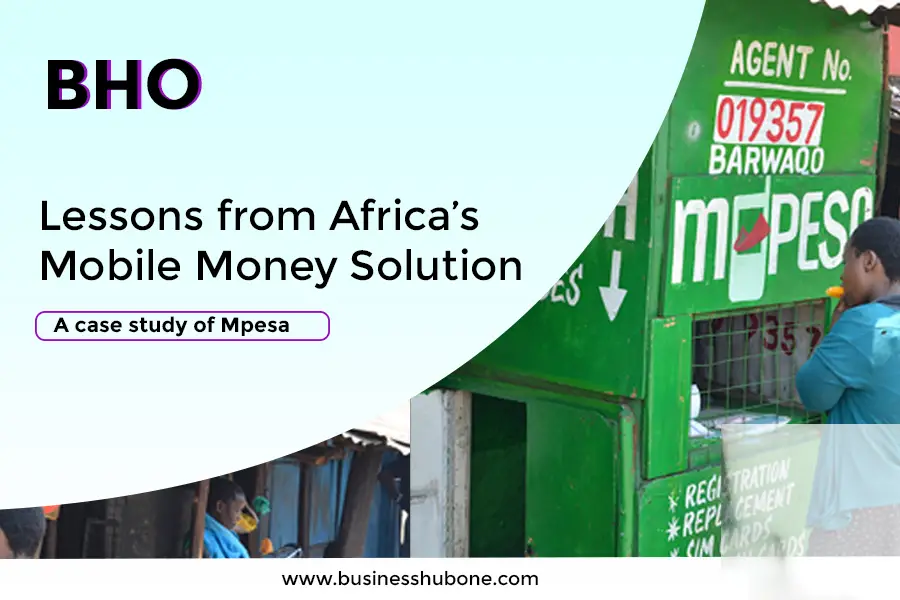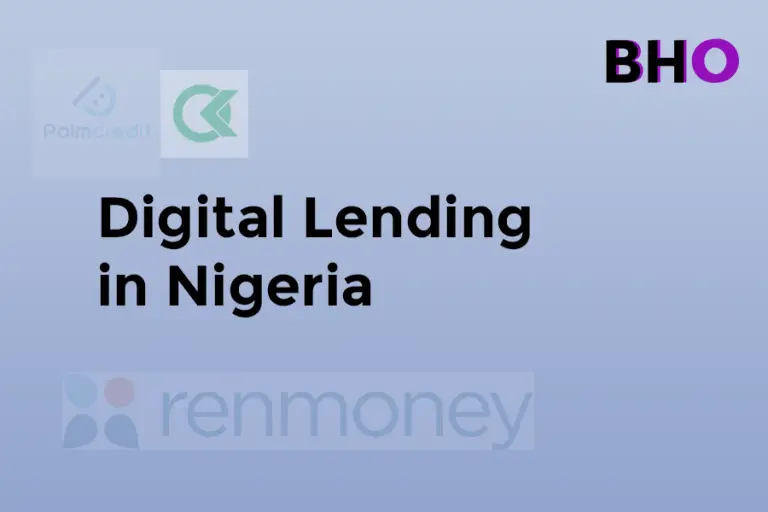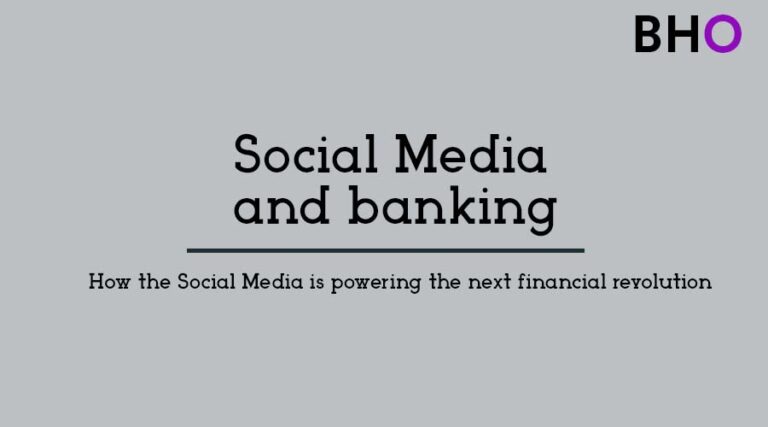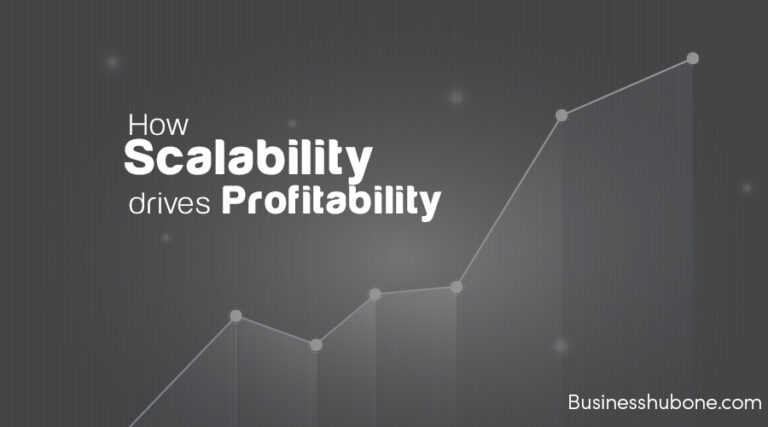Lessons from Africa’s Mobile Money Market: M-Pesa Case Study
Table of Contents
Introduction
The African mobile money market is one of the most successful mobile financial services (MFS) markets in the world. It has grown rapidly in recent years and is now used by millions of people across the continent. Mobile money has revolutionized the way people in Africa access financial services. In just a few years, mobile money has become the most popular way to send and receive money, make payments, and save in Africa without necessarily having a bank account.
Gone are the days when people stand in long queues at the bank or travel for long distances to make money transactions because Africa has inculcated innovations for a cashless society. Africa’s journey with mobile money is a testament to what can be achieved when technology is harnessed to improve lives and drive economic progress. It stands as a good example for Western countries that seek to improve the lives of those in the rural and urban areas as well as boost their economy.
Significantly, the presence of M-Pesa, Wave, and newer entrants like MTN has ignited remarkable growth in Africa’s mobile money market. Africa now leads the global mobile money market, with transactions reaching an astonishing $1.26 trillion. Also, Sub-Saharan Africa now contributes nearly 70% of the $1 trillion total mobile money transactions worldwide.
In 2020, Africans conducted $490 billion worth of transactions solely through mobile money providers. Furthermore, the 2023 State of the Industry Report on Mobile Money, published by the GSM Association (GSMA), reveals a 13% increase in registered mobile money accounts, rising from 1.4 billion in 2021 to 1.6 billion in 2022.
Notably, one of the most successful mobile money services in Africa is Kenya’s M-Pesa, which has expanded to other countries in Africa, and now has over 50 million active users. The success of M-Pesa and other mobile money services can teach us a lot about the challenges and opportunities of financial inclusion in Africa. Hence, in this article, we will delve into the M-Pesa case study to get valuable lessons for the adoption of the mobile money market worldwide.

What is mobile money?
Mobile money refers to a digital payment system that allows people to send, receive, and store money using their mobile phones. It’s a convenient and widely used method for conducting financial transactions, particularly in regions with limited access to traditional banking services.
Users can typically link their mobile phone numbers or email addresses to their accounts or virtual wallets to enjoy this service. With this, through specialized mobile money apps or USSD codes, they can deposit, withdraw and, transfer funds, pay bills, buy goods and services, and even access basic financial services like savings and loans.
Mobile money does not require a bank account for usage which is the opposite of Money transfer apps in Western countries. Well, it is different from Venmo, WorldRemit, Paypal, and CashApp which are used as money transfer apps in the US and most Western nations. This makes it a welcome development for Westerners to adopt.
Mobile money simplifies banking by acting as a mobile ATM. You hand cash to merchants in various places, who then deposit it into your mobile money account or perform cash withdrawals from your account.
A mobile money service must offer at least one of these services like transfers, mobile payments, and merchant transactions. It should also depend on transactional points outside traditional banks and ATMs, ensuring accessibility for unbanked and underbanked individuals. Mobile money services come in different forms which are:
- Payment from merchants
- Peer-to-peer (P2P) money transfer
- International remittance
- Data top-up and voice (airtime)
- Payment of bill
African mobile money market: The birth of M-Pesa
M-Pesa is the bedrock of the mobile money market in Africa. M-Pesa, short for “mobile money” in Swahili, was born out of a unique set of circumstances. In Kenya, many people were unbanked and had trouble accessing traditional financial services. They needed a safe and easy way to send money, and mobile phones were becoming very common. Banks were often far away and not designed to help rural folks with limited funds. Carrying cash was risky, and when family members working in the city wanted to send money home, their options were costly couriers or risky journeys.
So, Safaricom, Kenya’s leading mobile network operator, recognized this opportunity and introduced M-Pesa in 2007 to bridge the gap. Notably, Safaricom is affiliated with the UK’s Vodafone Group, which owns a 40 percent stake in the company. Initially conceived by Vodafone, the project’s pilot phase received financial support from the UK’s Department for International Development (DFID) during a six-month trial.
But then, the roots of M-Pesa date back to 2002 when phone companies noticed that users were effectively using prepaid airtime as a form of currency, a safer alternative to carrying cash. This observation led to the development of M-Pesa, a text-based system for storing and sending money. M-Pesa functions as an SMS-based platform that empowers users to deposit, transfer, and withdraw funds via their mobile phones. It’s accessible to individuals without a bank account, allowing transactions at any of the nation’s agent outlet
Initially designed for microloan repayments, M-Pesa quickly found other use cases, such as serving as an overnight safe for businesses and facilitating cash transfers between remote areas. As it addressed fundamental needs, M-Pesa gained rapid popularity, reaching over 8 million subscribers by the end of 2009 and eventually expanding to more than 15 million users and 30,000 agents by 2012. Its reach has since extended to multiple African countries, making it the continent’s leading mobile money service with over 604,000 active agents.
Safaricom’s launch of M-Pesa revolutionized the financial services landscape in Kenya, leading to its adoption in other African nations like Tanzania, Uganda, and Rwanda. This success prompted other telecom operators to develop their own mobile money systems, with MTN Mobile Money emerging as the largest provider with over 40 million subscribers across 20 African countries.
Factors that have contributed to the growth of the African mobile money market
There are a number of factors that have contributed to the success of the African mobile money market. These include:
- A large and growing mobile phone market: Africa’s mobile phone market is booming, making it a prime target for mobile money services. In Africa, roughly half of adults already own a mobile phone, and this number is expected to rise to over 80% in the next two years. Meanwhile, in developing countries, only 41% of the population has access to financial services.
- Lack of traditional financial infrastructure: In numerous regions across Africa, there is a shortage of typical financial facilities like banks and ATMs. This has led to a demand for alternative financial solutions like mobile money.
- Government support: Several African governments have actively endorsed the growth of mobile money services, which has contributed to the creation of a more accommodating regulatory framework for these services.
Lessons from African Mobile Money Market: M-Pesa Case Study
Hawla was a young woman who lived in a small village in Kenya. She worked as a farmer, but she often struggled to make ends meet. She had to walk for hours to the nearest market to buy supplies. She had never had a bank account, and she also had to trek to the nearest town to pay her bills or send money to her family. Hawla had to make long, risky trips to the bank, and theft was a constant threat. Her mall profits often dwindled, and she could hardly save a dime for their future.
One day, Hawla heard about a new mobile money service that could help her send and receive money more easily. She decided to give it a try, and she was amazed at how convenient it was. She could now send money to her family in the city with just a few taps on her phone. She could also pay her bills and buy goods and services with her mobile phone.
The mobile money market allowed Hawla to deposit money into her account using her mobile phone, and then withdraw it or send it to others using a simple text message. This made it much easier for her to manage her finances, and she was able to save money for the first time in her life.
The mobile money market helped Hawla in many ways. It helped her to save time and improve her financial security. She was no longer dependent on cash, and she could access her money whenever she needed it. The mobile money market also helped Hawla to expand her business. She could now accept payments from customers using her mobile phone. This made it easier for her to attract new customers and grow her business.
Hawla’s story is just one example of how mobile money is transforming lives in Africa. The mobile money market is providing people with access to financial services that they never had before. This is helping to reduce poverty and improve people’s lives. Well, here are the lessons from the African mobile money market which give tips on how Western countries can adopt it using the Mpesa strategy.
Financial inclusion
One of the most significant lessons from the African mobile money market is its ability to foster financial inclusion. In many African countries, physical banking services are limited in reach, leaving a significant portion of the population unbanked or underbanked. Hence, mobile money platforms have bridged this gap by providing easy, accessible, and affordable financial services to previously underserved communities. This has empowered millions to participate in the formal economy, save money, and access credit.
M-Pesa showcases this power of inclusivity. It was designed to reach the unbanked and underbanked populations in Kenya, opening up a world of financial services to those who were previously excluded. By offering basic financial transactions via mobile phones, M-Pesa demonstrated that financial inclusion is not just a noble goal but a financially viable one. Also, understanding the unique challenges and opportunities within each market is vital. M-Pesa customized its approach to fit the local context, whether in urban centers or rural areas.
Notably, in the US and several other Western nations, it’s not always simple to pay for goods using your phone. Although the majority of them have sizable unbanked populations, they have not yet taken advantage of the mobile money market, which is commonplace in several parts of Africa. In Uganda, 43% of the population has a mobile money account. The percentage in Kenya is 72%.
Related: Mobile Money and Financial Inclusion in Africa
Accessible user adoption
The mobile money market in Africa allows for easy accessibility of its services. M-Pesa for example places importance on accessibility and inclusivity. It allowed anyone with a mobile phone, regardless of their income or education level, to access financial services. This inclusivity played a pivotal role in bringing financial services to the previously unbanked and underserved population. The global financial industry can learn from M-Pesa’s focus on accessibility, making banking services available to everyone, regardless of their socioeconomic status.
Mobile money applications do not need a physical bank location, but they ultimately function very much like a bank account and debit card would for an American, giving the average Kenyan with such an account access to many of the same financial services as someone in the US.
Simplicity
Africans have shown that innovation does not always mean complexity. Many mobile money platforms in the region have succeeded by keeping their services simple and user-friendly. This approach has enabled even those with limited technological literacy to utilize mobile money effectively. The lesson here is that user-centric design and simplicity can drive widespread adoption.
M-Pesa’s success is attributed, in part, to its simplicity. The service allows users to send and receive money, pay bills, and even access small loans using their mobile phones. Its straightforward interface and easy-to-understand processes have been a key driver of adoption. In a world where fintech solutions often come with complexity and jargon, M-Pesa reminds us that simplicity can be a powerful tool for reaching a wider audience. This user-centric approach is crucial when designing any technology-driven solution, especially in emerging markets.
Convenience and affordability
Through its enormous network of agents throughout the nation, M-Pesa has established itself as a remarkably convenient money transfer option. Its low transaction costs and accessibility make it a user-friendly alternative that is also cost-effective. In addition to ensuring security, this mobile money service makes remittances easier while charging significantly less than traditional wire transfers or postal services. This accessibility ensures that more funding reaches rural areas, reducing the risk of starvation and promoting financial inclusion.
In comparison to Venmo and other money transfer apps, mobile money accounts operate without the need for a bank account. Mobile money systems use human agents, people who hang out at important spots across the nation, including isolated rural areas, with cash and a telephone, to make a deposit or collect cash from the app. Mobile money can be used for other cashless transactions, such as paying for services or groceries. This makes it very easy and affordable.
Partnerships and collaboration with regulatory bodies
African governments and regulatory bodies have played a pivotal role in shaping the mobile money landscape. Collaboration between regulators and service providers has led to a conducive environment for innovation and competition. Furthermore, effective regulation has safeguarded consumers and maintained the integrity of the financial system. The African experience emphasizes the importance of a balanced approach to regulation.
The story of M-Pesa illustrates the value of public-private cooperation in mobile money services across the globe. M-Pesa encountered regulatory obstacles but worked with authorities to maintain compliance while offering helpful services. For financial services to remain viable, this teamwork helped to build confidence and stability.
Also, the Kenyan government played a pivotal role by offering a supportive regulatory environment, sparking a mobile money revolution. Also, Safaricom formed strategic partnerships with the Central Bank of Kenya, Commercial Bank of Africa, and Pesapoint for ATMs, aided by Faulu and DFID funding, aligning well with government requirements.
Trust and Security
Establishing trust is paramount in any financial system. Mobile money providers in Africa have prioritized building trust with their customers by investing heavily in security measures. This trust has been key to the widespread adoption of mobile money services. The lesson here is that without a secure foundation, the potential of digital finance cannot be fully realized.
M-Pesa made security a top priority to safeguard user funds and personal data, which fostered trust among users. This trust was pivotal in driving adoption, especially in an era marked by data breaches and fraud concerns. M-Pesa’s security focus sets an example for establishing a foundation of trust.
Despite Safaricom’s reputation, public confidence was initially poor upon opening because of fraud fears, especially when SMS receipts were delayed or lost. However, when users became used to dealing with agents and saw the benefits of the service, their trust in them gradually increased. M-Pesa uses security methods including user education, enhanced fraud detection, SMS confirmation, PIN authentication, and SIM swap protection.
Adaptability and Evolution
African mobile money providers have shown adaptability and resilience in the face of challenges, such as infrastructure limitations and changing customer needs. They have constantly evolved their services to meet the unique demands of each market. This adaptability has been a key driver of success.
M-Pesa’s success in Kenya hinged on its pioneering inclusion of credit facilities within mobile money operations. This highlighted the potential to seamlessly integrate financial products like credit and insurance into mobile money, truly “banking the unbanked” by offering a full range of financial services. M-Pesa’s growth goes beyond basic money transfers, with added services like micro-loans, bill payments, insurance, and merchant options. This adaptability to shifting market and consumer demands is crucial for staying relevant and dominant in the industry.
M-Pesa, amidst the ever-changing tech world, has shown impressive adaptability. It introduced M-Shwari, a mobile banking service, which has expanded across Africa. Additionally, Safaricom and Equity Bank introduced M-Kesho, an interest-bearing savings account directly tied to M-Pesa. The takeaway is that innovation and adaptability are key in competitive markets
Community engagement and poverty alleviation.
African countries have invested in educating users about mobile money, which can be emulated in the West to ensure people understand and trust these services. These mobile money service providers have also helped many people in the communities.
For instance, M-Pesa has helped boost the local communities. It encouraged business owners’ financial independence, increased access to healthcare, and helped with disaster assistance.
By focusing on the value of good effect together with profits, this community-centric strategy highlights the wider social benefits of mobile money services. Through the M-Pesa Foundation, they have provided support to the community in the areas of social services, healthcare, and general education.
In addition, the quick rise of M-Pesa helped 194,000 households escape poverty. Families in poverty who have access to mobile money are more stable. They have a backup plan thanks to their capacity to save money and get gifts from friends and family. You may locate an agent practically anyplace in Kenya, which has led the world in the spread of these services and where 96 percent of families have a mobile money account.
Agent Network Expansion
To facilitate cash-in and cash-out transactions, M-Pesa established a vast network of agents, including small shopkeepers and entrepreneurs. This approach made it convenient for users to convert physical cash into digital money and vice versa. Building a widespread agent network is a valuable strategy for any mobile money service, ensuring that users can access their funds when needed.
M-Pesa operates with an efficient, diverse team and a clear hierarchical structure. Well, Safaricom manages M-PESA with a local team of 20+ professionals and external agency assistance for the agent network. Over 50 staff members oversee agent training and visits, supported by a dedicated department providing training materials. Also, retail agents handle customer registration and transactions, often serving as a direct link to M-PESA Customer Care for support. This agent networking built a penetration into large and low-income markets in Kenya.
Cross-Border Remittances
Cross-border remittances are becoming more easily and affordably available thanks to African mobile money providers. Western countries might look into joint ventures with mobile money companies to enhance international remittance services. But as of now, just a small number of central banks globally have
Well, Mobile money services, like M-Pesa in Kenya or MTN Mobile Money in several African nations, have become very popular. By enabling users to send and receive money via their mobile phones, they act as a foundation for cross-border remittances. They have partnered with global money transfer firms including Western Union and MoneyGram. Users can now transfer money from their mobile wallets to foreign places and vice versa thanks to these collaborations.
Contributing to Economic Growth
The popularity of mobile money has improved not just people’s lives but also the economy. Mobile money has improved company transactions and cross-border trade by offering quick and safe payment options. Moreover, mobile payments’ convenience has benefited small firms in particular, boosting their productivity and entrepreneurship.
African mobile money market: Where has it worked?
According to a recent report, the top three countries worldwide for mobile money usage are China, Kenya, and Ghana. In Kenya and the Philippines, M-Pesa and GCash are two widely used mobile money systems. Additionally, M-Pesa is used in the Democratic Republic of the Congo (DRC), Egypt, Ghana, Kenya, Lesotho, Mozambique, Tanzania, and several other East African nations. Here are some mobile money markets in the world:
- Easypaisa in the Philippines
- bKash in Bangladesh
- MTN mobile money in Ghana, Uganda, Rwanda, and Nigeria
- Vodacom in Tanzania
- FNB in South Africa
- Jazz Cash in Pakistan
Mobile network providers and money transfer services have partnered in some African and Asian countries, as well as some regions of the Americas and Oceania. Due to this, mobile money accounts are now widely used, making it simple for users to transmit money to their mobile phones. As a result, mobile money transfers between the USA and nations like Nigeria or Ghana are extremely prevalent
Nonetheless, certain countries face challenges in fully adopting services like M-Pesa, such as difficulties in expanding agent networks, exemplified by Niger. Furthermore, stringent regulations and policies hinder the acceptance of mobile money services in many regions. Generally, countries like the USA, Canada, Germany, the UK, Russia, and Brazil do not support mobile money services like M-Pesa.
African mobile money market: Impact on the growth of other sectors in the economy
The World Bank claims as mobile money is embraced by industries like agriculture, health care, and business, it may eventually become a broad platform that transforms entire economies. So, how can it help other sectors to grow? Here are some ways other sectors have benefited from the mobile money market for growth.
- Education: Mobile money has made it easier for students to pay for school fees, buy textbooks, and access other educational resources. Educational institutions and organizations can disburse scholarships and grants to students more efficiently through mobile money platforms. For example, in Kenya, the M-PESA Foundation has partnered with the government to provide scholarships to students who use mobile money to pay their school fees.
- Health: Mobile money has facilitated the payment of health insurance premiums, making healthcare more accessible to a wider population. Hospitals and clinics can purchase medicines and medical supplies more easily using mobile money, ensuring the availability of essential healthcare items.
Also, people are more inclined to save money when there is an easy and secure way for them to do so, thus they are more likely to have savings as a safety net in case a family member becomes ill. They are also more likely to be able to get assistance from friends and family in an emergency due to the simplicity with which money can be sent. Overall, the impact of mobile money is that it increases the likelihood that people will be able to get medical care when they are ill.
- Agriculture: Farmers can access microloans through mobile money services to invest in their farms, purchase seeds, and improve agricultural practices. Mobile money can be used for transactions related to the sale of agricultural products, connecting farmers to wider markets. For example, in Ghana, smallholder farmers have used mobile money to buy seeds, fertilizers, and other agricultural inputs. This has helped to increase crop yields and improve farmers’ incomes.
- Transport: Mobile money is used for fare payments in public transportation, making commuting more efficient and accessible. For example, in Kenya, matatu (minibuses) operators have used M-Pesa to collect fares from passengers. This has made it easier for passengers to pay their fares and has also helped to reduce the risk of fraud. Also, transportation companies can use mobile money to manage vehicle maintenance and repair costs, ensuring safer journeys.
- Microfinance: Small businesses in Africa have received microloans using mobile money. This has accelerated economic growth and helped create jobs.
- E-commerce: People can now buy and sell goods and services online more easily thanks to the use of mobile money in e-commerce transactions. This is promoting the expansion of online businesses and generating new employment.
- Government services: Tax collection and social assistance payments are two examples of government services that are currently provided using mobile money. Governments can communicate with the public and operate more effectively as a result
Conclusion
A wealth of lessons can be learned from the M-Pesa case study for the global banking sector and mobile money markets. M-Pesa has achieved great success thanks to its dedication to usability, accessibility, and simplicity as well as its extensive agent network, regulatory collaboration, and adaptability. Therefore, the world should pay attention to Africa’s continued leadership in mobile money innovation and apply these priceless lessons to advance financial inclusion and technology advancement on a global scale. M-Pesa is not just a success story from Kenya; it also serves as a blueprint for the global transformation of financial services






